This article was co-authored by Robert Dhir, MD. Dr. Robert Dhir is a board certified Urologist, Urological Surgeon, and the Founder of HTX Urology in Houston, Texas. With over 10 years of experience, Dr. Dhir’s expertise includes minimally-invasive treatments for enlarged prostate (UroLift), kidney stone disease, surgical management of urological cancers, and men’s health (erectile dysfunction, low testosterone, and infertility). His practice has been named a Center of Excellence for the UroLift procedure, and is a pioneer in non-surgical procedures for ED using his patented Wave Therapy. He earned his undergraduate and medical degrees from Georgetown University and was awarded honors in pre-medical studies, urology, orthopedics, and ophthalmology. Dr. Dhir served as chief resident during his urological surgical residency at University of Texas at Houston / MD Anderson Cancer Center in addition to completing his internship in general surgery. Dr. Dhir was voted Top Doctor in Urology for 2018 to 2019, one of the top three Best Rated Urologists in 2019 & 2020 for Houston Texas, and Texas Monthly has named him to the 2019 & 2020 Texas Super Doctors Rising Stars list.
wikiHow marks an article as reader-approved once it receives enough positive feedback. This article received 11 testimonials and 83% of readers who voted found it helpful, earning it our reader-approved status.
This article has been viewed 1,098,873 times.
A digital rectal exam (DRE) is one of the primary methods a doctor uses to check your prostate. It involves the doctor briefly inserting a finger into your rectum to feel for potential abnormalities. The abnormalities may include symptoms associated with prostate cancer, benign prostate hyperplasia (an enlarged prostate), and prostatitis (an inflamed prostate usually from infection).[1] Medical professionals do not recommend trying to perform a self exam due to the training required to reach accurate conclusions based on the exam. However, if you wish to administer your own exam, you should be familiar with the techniques used by an examining physician.
Steps
Deciding If You Need a Prostate Screening
-
1Determine the necessity of a screening based on your age. The American Cancer Society suggests a yearly prostate screening for all men age 50 and over. However, select circumstances may warrant screenings beginning at an earlier age. These include:[2]
- Age 40 for men with more than one first-degree relative (son, brother, or father) who had prostate cancer before age 65.
- Age 45 for men with a single first-degree relative who had prostate cancer before age 65.
- Age 45 for African American men due to carrying a higher risk of prostate cancer.
-
2Note any symptoms associated with your urinary system. Problems associated with your bladder, urethra, and penis can all potentially have ties to prostate problems.[3] Due to the proximity of the prostate to these systems it can grow and press against them causing dysfunction. With prostate issues you may experience the following:[4]
- Slow or weak urine streams
- Difficulty urinating
- Frequent urination at night
- Burning urination
- Blood in your urine
- Difficulty getting an erection
- Painful ejaculation
- Lower back pain
Advertisement -
3See your doctor. If you have any urinary symptoms, a variety of ailments may be responsible that a DRE alone cannot diagnose. Also, a DRE is just one of several tests your doctor may use to determine the health of your prostate.[5]
- Your doctor may order a trans rectal ultrasound (TRUS) to check for suspicious tissues inside of your rectum.
- A biopsy may also be necessary to confirm or rule out cancer.
-
4Request a prostate-specific antigen (PSA) test. Your doctor can order a laboratory test to check your PSA levels (a specific protein found in your prostate) in the event of prostate abnormalities. Most doctors conclude a PSA level of 4ng/ml or lower is considered normal.[6]
- PSA levels can cause false positive or false negative results. The Unites States Preventive Task Force advises against prostate screening with PSA levels due to these risks.[7]
- Ejaculation (recent sexual activity), prostate infection, digital rectal examination, and bike riding (due to pressure on the prostate) can cause elevations of PSA. Those without prostate symptoms and elevated PSA may require repeat testing after two days.
- Repeat elevated PSA levels may warrant a DRE and/or biopsy of the prostate (needle inserted to take a piece of the prostate tissue for analysis) if symptoms are present.
- Men with a PSA of less than 2.5 ng/mL may only need to be retested every two years whereas screening should be done yearly if your PSA level is 2.5 ng/mL or higher.[8]
Checking Your Prostate
-
1Consider having your doctor perform the exam.[9] Though it may seem relatively simple to perform, prostate exams require proper technique and the ability to understand what you are feeling for.
- Possible complications include bleeding due to nail punctures of cysts or other masses. This can lead to infection or other complications, which you cannot handle at home and would require a trip to your doctor regardless.
- In addition, if your self exam is abnormal and you seek advice from your doctor, he will most likely repeat the exam to confirm the results anyway.
-
2Assume the correct position. Performed at your doctor’s office, your doctor would position you either lying down on your side with your knees up or standing leaning forward with your hips flexed. This gives the doctor easier access to your rectum and prostate.[10]
-
3Inspect the area for any skin conditions. This will either require some handy work with a hand mirror or the assistance of a spouse or partner. Inspect your rectal area visually for any skin conditions, such as cysts, warts, or hemorrhoids.[11]
-
4Put on a sterile glove. You or your partner should put on a sterile latex glove to perform the DRE. Ensure that you wash your hands before touching the glove to put it on. You will only use your index finger for the exam, but you should still wear gloves.
- Ensure you have closely trimmed fingernails before washing your hands and putting on the glove. Even through the latex, you can accidentally scrape the area or puncture a cyst or other mass.
-
5Lubricate the glove. A lubricant such as Vaseline or KY Jelly will allow easier, less stressful penetration into the rectum. Apply a liberal amount of the lubricant to the index finger of the glove.
-
6Feel the walls of your rectum. You or your partner will insert the index finger into your rectum. Turn the finger in a circular motion to feel for any bumps or lumps that could indicate cancer, tumors, or cysts along the walls of your rectum. If no abnormalities are present, the walls should be smooth with a consistent shape.[12]
- Use gentle pressure.
-
7Feel the wall of your rectum toward your belly button. Your prostate lies above/in front of this portion of your rectal wall. Abnormal findings as you feel toward your prostate include firm, bumpy, non-smooth, enlarged, and/or tender areas.[13]
-
8Remove your finger. In a professional setting, the entire exam will take approximately ten seconds, so don’t spend too much time feeling around as it will only increase your discomfort with the exam.[14] Dispose of the glove and remember to wash your hands again immediately.
-
9Contact your doctor. Make sure that you follow-up with your doctor for further tests and discussion. If you feel like your exam showed abnormalities, then you should make an appointment with your doctor right away.[15] Remember to tell the physician that you administered a self exam if it’s been less than two days since this can result in an elevated PSA level on other tests.
Expert Q&A
-
QuestionWhat if there is blood in my semen?
 Chris M. Matsko, MDDr. Chris M. Matsko is a retired physician based in Pittsburgh, Pennsylvania. With over 25 years of medical research experience, Dr. Matsko was awarded the Pittsburgh Cornell University Leadership Award for Excellence. He holds a BS in Nutritional Science from Cornell University and an MD from the Temple University School of Medicine in 2007. Dr. Matsko earned a Research Writing Certification from the American Medical Writers Association (AMWA) in 2016 and a Medical Writing & Editing Certification from the University of Chicago in 2017.
Chris M. Matsko, MDDr. Chris M. Matsko is a retired physician based in Pittsburgh, Pennsylvania. With over 25 years of medical research experience, Dr. Matsko was awarded the Pittsburgh Cornell University Leadership Award for Excellence. He holds a BS in Nutritional Science from Cornell University and an MD from the Temple University School of Medicine in 2007. Dr. Matsko earned a Research Writing Certification from the American Medical Writers Association (AMWA) in 2016 and a Medical Writing & Editing Certification from the University of Chicago in 2017.
Family Medicine Physician Sometimes prostate cancer can cause blood in the semen. I would get checked out by an urologist.
Sometimes prostate cancer can cause blood in the semen. I would get checked out by an urologist. -
QuestionI have some blood in my urine, but the doctor checked it under a microscope and said it's not a big deal. He said to return in a year for another check up. Is my prostate okay?
 Chris M. Matsko, MDDr. Chris M. Matsko is a retired physician based in Pittsburgh, Pennsylvania. With over 25 years of medical research experience, Dr. Matsko was awarded the Pittsburgh Cornell University Leadership Award for Excellence. He holds a BS in Nutritional Science from Cornell University and an MD from the Temple University School of Medicine in 2007. Dr. Matsko earned a Research Writing Certification from the American Medical Writers Association (AMWA) in 2016 and a Medical Writing & Editing Certification from the University of Chicago in 2017.
Chris M. Matsko, MDDr. Chris M. Matsko is a retired physician based in Pittsburgh, Pennsylvania. With over 25 years of medical research experience, Dr. Matsko was awarded the Pittsburgh Cornell University Leadership Award for Excellence. He holds a BS in Nutritional Science from Cornell University and an MD from the Temple University School of Medicine in 2007. Dr. Matsko earned a Research Writing Certification from the American Medical Writers Association (AMWA) in 2016 and a Medical Writing & Editing Certification from the University of Chicago in 2017.
Family Medicine Physician Blood in the urine can be due to a number of different causes including kidney stones. Your doctor will conduct a digital rectal examination and get a PSA level to determine if there is need for further evaluation.
Blood in the urine can be due to a number of different causes including kidney stones. Your doctor will conduct a digital rectal examination and get a PSA level to determine if there is need for further evaluation.
Warnings
- Note that cancer can occur even with normal results from both the PSA test and a DRE.⧼thumbs_response⧽
- Closely trim your fingernails first.⧼thumbs_response⧽
- Consensus regarding the reliability of screening is mixed with some foundations and physicians recommending it whereas others do not.[16] Discuss your family history, age, and symptoms with your healthcare provider to make an informed decision.⧼thumbs_response⧽
Things You'll Need
- Surgical gloves
- Lubrication
References
- ↑ Bickley, Lynn S. Techniques of Examination. Chapter 15 The anus, rectum and prostate. Bates Pocket Guide to Physical Examination and History Taking. sixth edition. P 262-264. © 2009 Wolters Kluwer Health- Lippincott Williams & Wilkins.
- ↑ http://www.cancer.org/cancer/prostatecancer/moreinformation/prostatecancerearlydetection/prostate-cancer-early-detection-acs-recommendations
- ↑ Robert Dhir, MD. Board Certified Urologist & Urological Surgeon. Expert Interview. 23 September 2020.
- ↑ Bickley, Lynn S. Techniques of Examination. Chapter 15 The anus, rectum and prostate. Bates Pocket Guide to Physical Examination and History Taking. sixth edition. P 262-264. © 2009 Wolters Kluwer Health- Lippincott Williams & Wilkins.
- ↑ Robert Dhir, MD. Board Certified Urologist & Urological Surgeon. Expert Interview. 23 September 2020.
- ↑ http://www.pcf.org/site/c.leJRIROrEpH/b.5802071/k.C620/PSA__DRE_Screening.htm
- ↑ http://www.pcf.org/site/c.leJRIROrEpH/b.5802071/k.C620/PSA__DRE_Screening.htm
- ↑ http://www.cancer.org/cancer/prostatecancer/moreinformation/prostatecancerearlydetection/prostate-cancer-early-detection-acs-recommendations
- ↑ Robert Dhir, MD. Board Certified Urologist & Urological Surgeon. Expert Interview. 23 September 2020.
- ↑ Bickley, Lynn S. Techniques of Examination. Chapter 15 The anus, rectum and prostate. Bates Pocket Guide to Physical Examination and History Taking. sixth edition. P 262-264. © 2009 Wolters Kluwer Health- Lippincott Williams & Wilkins.
- ↑ Bickley, Lynn S. Techniques of Examination. Chapter 15 The anus, rectum and prostate. Bates Pocket Guide to Physical Examination and History Taking. sixth edition. P 262-264. © 2009 Wolters Kluwer Health- Lippincott Williams & Wilkins.
- ↑ Bickley, Lynn S. Techniques of Examination. Chapter 15 The anus, rectum and prostate. Bates Pocket Guide to Physical Examination and History Taking. sixth edition. P 262-264. © 2009 Wolters Kluwer Health- Lippincott Williams & Wilkins.
- ↑ http://www.pcf.org/site/c.leJRIROrEpH/b.5802071/k.C620/PSA__DRE_Screening.htm
- ↑ Bickley, Lynn S. Techniques of Examination. Chapter 15 The anus, rectum and prostate. Bates Pocket Guide to Physical Examination and History Taking. sixth edition. P 262-264. © 2009 Wolters Kluwer Health- Lippincott Williams & Wilkins.
- ↑ Robert Dhir, MD. Board Certified Urologist & Urological Surgeon. Expert Interview. 23 September 2020.
- ↑ http://www.pcf.org/site/c.leJRIROrEpH/b.5802037/k.6B8C/Early_Detection__Screening.htm
About This Article
If you are a man over the age of 40 and are experiencing symptoms like difficulty urinating or lower back pain, you may want to have your doctor check your prostate. To check your prostate, your doctor will have you lie down on your side with your knees up, or ask you to stand while leaning forward with your hips flexed. After they put on a sterile glove that they've lubricated with something like Vaseline, your doctor will use their finger to gently feel the walls of your rectum. During the exam, they will feel for abnormalities, such as bumpy, firm, enlarged, or tender areas. This may sound a bit scary, but the good news is that the exam should only take around 10 seconds. For more advice from our Medical co-author, including how to check the skin around your prostate, keep reading.

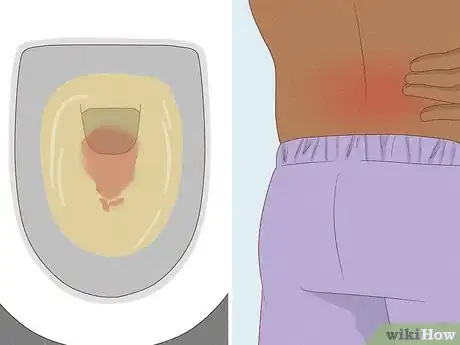


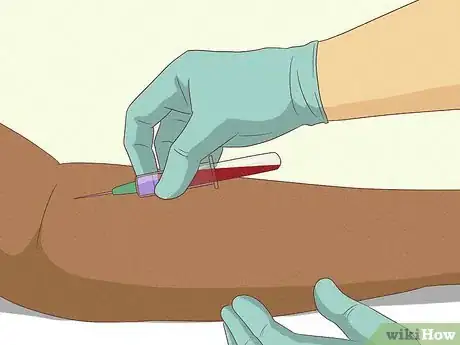


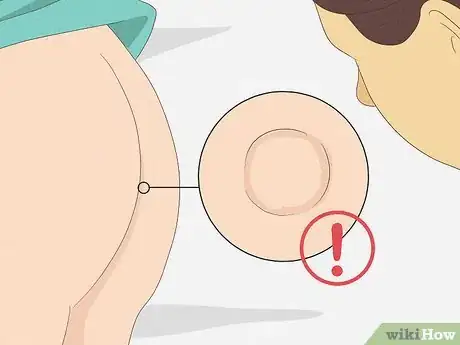


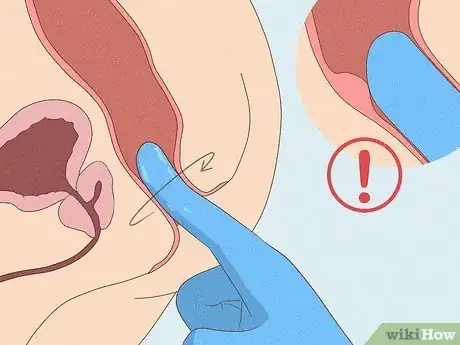
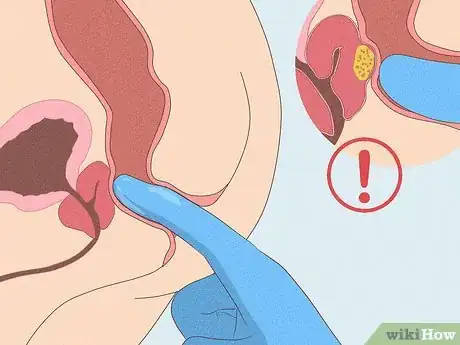
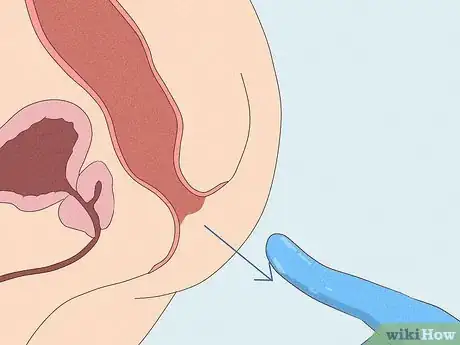






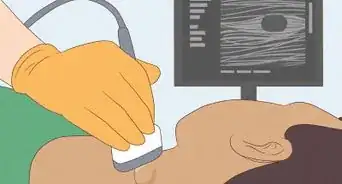




-Step-13.webp)

-Step-8-Version-3.webp)


















































Medical Disclaimer
The content of this article is not intended to be a substitute for professional medical advice, examination, diagnosis, or treatment. You should always contact your doctor or other qualified healthcare professional before starting, changing, or stopping any kind of health treatment.
Read More...